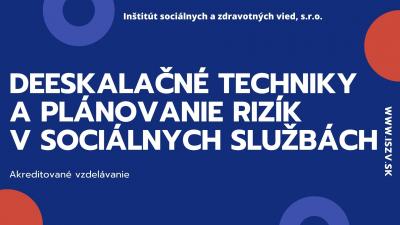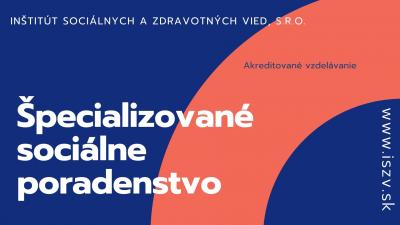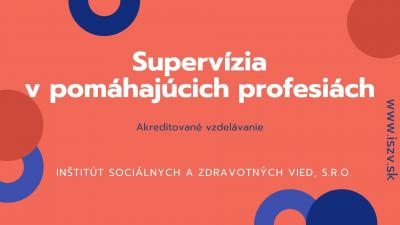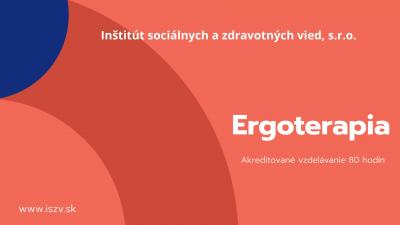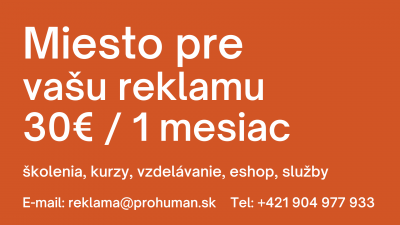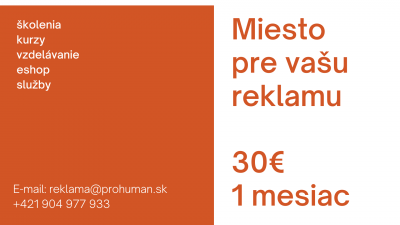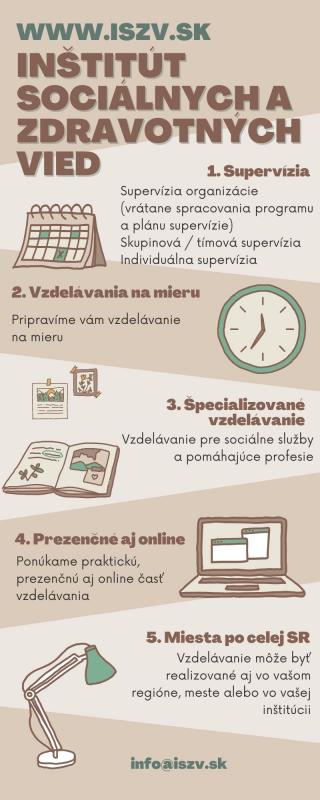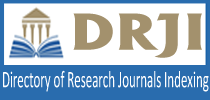Dodržiavanie stredomorskej diéty a úroveň potravinovej gramotnosti u dospelých Slovákov
ABSTRACT:
Background and purpose: Overweight/obesity is recognized as a global public health concern with negative health impacts. Food-related knowledge and dietary practices are among the most important modifiable factors for tackling this challenge. However, little is known about food and nutrition literacy and eating patterns in the Visegrad Group countries, including Slovakia. Thus, we aimed to assess food knowledge and Mediterranean diet adherence (MD) in the general population.
Methods: We included 301 adults (mean age 45.29±14.61 years; 56.7% female; body mass index (BMI) 29.23±6.69 kg/m2; waist-to-height ratio (WHtR) 0.57±0.12). Participants filled in the Healthy Eating Plate Questionnaire (Plate-Q) and the 14-item Mediterranean Diet Adherence Screener (MEDAS). Frequencies, t-tests, chi-square, and correlation analyses were used to analyse the data in SPSS 26.
Results: Only 18.0% of participants were able to understand the healthy choices in the major food groups using the Plate-Q. Correlation analyses showed that food knowledge was lower in people with higher age (r=0.14; p≤0.05), people living in rural areas (r=-0.19; p≤0.01), with lower education (r=-0.13; p≤0.05), and income (r=-0.13; p≤0.05). A total of 72.9% of participants reported low MD adherence. Although olive oil as the main culinary fat was used by 57% of participants, daily olive oil consumption was found to be satisfactory only in 12.5%. Item analysis also showed unsatisfactory weekly consumption of fish in 91%, legumes in 84.6%, and nuts in 76.6% of the participants. A total of 79.7% and 72.1% of participants were not able to fulfill the MEDAS criteria for recommended daily fruit and vegetable consumption, respectively. More than three-quarters of our study sample (72.4%) consumed red meat or processed meat products daily, while 82.9% preferred white meat over red and pork meat. Our results showed also a high daily consumption of animal fat (69.8%). A total of 42.9% consumed commercial pastries more than two times per week while daily sweet beverage consumption was less common (32.6%). Correlation analyses showed that MD adherence was higher in females (r=0.15; p<0.05); people from urban areas (r=0.30; p≤0.001), and with lower BMI (r=-0.17; p<0.05).
Conclusion: We identified a poor understanding of healthy food choices, low adherence to an MD, and a high prevalence of unhealthy eating patterns. Low fruit, vegetable, and legume consumption; together with excessive meat consumption identified in our study may contribute to poor population health and pose a risk to environmental sustainability. A better understanding of unhealthy eating patterns and poor food literacy, especially in older people, males, people living in rural areas, those with lower education and income, and higher BMI, is an important starting point for the designing of more efficient non-pharmacological interventions [Grant support: VEGA: 1/0748/22].
Keywords: Mediterranean diet adherence, food knowledge, obesity, overweight
ABSTRAKT:
Cieľ: Nadváha a obezita predstavujú globálny problém s negatívnym vplyvom na zdravie populácie. Potravinová gramotnosť a stravovacie návyky patria medzi najdôležitejšie modifikovateľné faktory na riešenie tejto výzvy. Úroveň potravinovej a nutričnej gramotnosti a stravovacie návyky sú však v krajinách Vyšehradskej štvorky vrátane Slovenska stále málo známe. Cieľom našej štúdie je preskúmať potravinovú gramotnosť a adherenciu k mediteránskej/stredomorskej diéte (MD) vo všeobecnej populácii.
Metódy: Do výskumu sme zaradili 301 dospelých ľudí (priemerný vek 45.29±14.61 rokov; 56.7% žien; index telesnej hmotnosti (BMI) 29.23±6.69 kg/m2; pomer pásu k výške (WHtR) 0.57±0.12). Účastníci vyplnili Healthy Eating Plate Questionnaire (Plate-Q) a 14-položkový Mediterranean Diet Adherence Screener (MEDAS). Na analýzu údajov v štatistickom programe SPSS 26 sme použili frekvencie, t-testy, chí-kvadrátový test a korelačné analýzy.
Výsledky: Naša štúdia ukázala, že 18% participantov bolo schopných identifikovať zdravý výber v hlavných potravinových skupinách meraných Plate-Q. Korelačné analýzy ukázali, že potravinové znalosti boli nižšie u ľudí vo vyššom veku (r=0.14; p≤0.05), ľudí žijúcich na vidieku (r=-0.19; p≤0.01), s nižším vzdelaním (r=-0.13; p≤ 0.05) a nižším príjmom (r=-0.13; p≤0.05). Celkovo 72.9% účastníkov uviedlo nízku adherenciu ku MD. Hoci olivový olej ako hlavný kulinársky tuk používalo 57% účastníkov, zistilo sa, že denná spotreba olivového oleja je uspokojivá len u 12.5% participantov. Analýza jednotlivých položiek tiež ukázala nízku týždennú konzumáciu rýb u 91% účastníkov, strukovín u 84.6 % účastníkov a orechov u 76.6% účastníkov. Kritériá MEDAS pre odporúčanú dennú konzumáciu ovocia a zeleniny nebolo schopných splniť celkovo 79.7% a 72.1% ľudí. Viac ako tri štvrtiny ľudí z našej vzorky (72.4%) denne konzumovalo červené mäso alebo spracované mäsové výrobky, zatiaľ čo 82.9% uprednostňovalo biele mäso pred červeným a bravčovým. Naše výsledky ukázali aj vysokú dennú spotrebu živočíšneho tuku (69.8%). Celkovo 42.9% ľudí konzumovalo komerčné pečivo viac ako dvakrát týždenne, zatiaľ čo denná konzumácia sladkých nápojov bola menej častá (32.6%). Korelačné analýzy ukázali, že celková adherencia MD bola vyššia u žien (r=0.15; p<0.05); u ľudí z miest (r=0.30; p≤0.001) a participantov s nižším BMI (r=-0.17; p<0.05).
Záver: Naša štúdia identifikovala nízku potravinovú gramotnosť, nízku úroveň adherencie k MD a vysokú prevalenciu nezdravých stravovacích návykov. Nízka spotreba ovocia, zeleniny a strukovín; spolu s nadmernou konzumáciou mäsa identifikovanou v našej štúdii môže prispieť k zlému zdravotnému stavu populácie a v neposlednom rade predstavovať environmentálne riziko a znižovať udržateľnosť životného prostredia. Identifikácia a lepšie pochopenie nezdravých stravovacích návykov a nízkej potravinovej gramotnosti, najmä u ľudí vo vyššom veku, mužov, ľudí žijúcich na vidieku, ľudí s nižším vzdelaním a príjmom a vyšším BMI, predstavuje dôležité východisko pre navrhovanie účinnejších nefarmakologických intervencií. [Grantová podpora: VEGA: 1/0748/22].
Kľúčové slová: Adherencia k stredomorskej diéte, potravinová gramotnosť, obezita, nadváha
Introduction
Overweight/obesity is recognized as a global public health concern with a negative health impact. Based on the latest estimates in EU countries, overweight affects 30-70% and obesity affects 10-30% of adults. Obesity and overweight rates have tripled in the past 30 years and continue to increase globally (WHO, 2020). The prevalence of overweight in Slovakia is 57% of the adult population, and 21% of adults fit the criteria for obesity (World Obesity Federation, 2021), with the difference in obesity rate by income and education larger than in the rest of the EU (OECD, 2019; OECD, 2023).
In addition, the health status and life expectancy of the Slovak population lag behind the EU average (OECD, 2023), with the second-highest rate of very poor or poor subjective health (Jutz, 2020). Slovakia also ranks second in the world for colorectal cancer prevalence, first in the EU for breast cancer mortality, and leads globally in decompensated advanced chronic liver disease. It is also among the top ten OECD countries for cardiovascular mortality (Skladany, 2021; OECD, 2023).
Nutrition-related knowledge and dietary practices are among the most important modifiable factors for tackling this challenge as the abovementioned diseases are often caused by lifestyle factors with poor-quality nutrition identified as one of the main factors associated with their increase (Minarik, 2022; Skladany, 2021). Low fruit and vegetable intake, insufficient physical activity of 40-60% of Slovak inhabitants, and low amount of leisure time spent actively represent salient problems in health and weight management (World Obesity Federation, 2021; Olisarova et al., 2021; UVZSR, 2022). Consumption of sugar and alcohol in the Visegrad Group countries, including Slovakia, is also significantly higher compared to the EU average (OECD, 2019). In total consumption of sugar and sugar products, Slovakia ranked first among OECD countries with 49.7 kg per person (Ministry of Finance of SR, 2019).
The abovementioned behavioral risk factors cause 50% of all deaths in Slovakia, which is significantly above the EU average of 39% (OECD, 2019, OECD, 2023). Dietary risks in Slovakia currently account for 26% of mortality rates while in the EU it is 17%. Moreover, the prevalence of behavioral risk factors in Slovakia tends to be higher among people with the lowest levels of education and income (OECD, 2023). Preventive strategies and effective weight management were identified as one of the most important challenges in public health (World Obesity Federation, 2021). Nevertheless, efficient weight management and understanding obesity as the second leading cause of preventable death (De Lorenzo, 2020) do not receive prioritization commensurate with its prevalence and impact (World Obesity Federation, 2021).
Nutrition literacy and food literacy have become increasingly important concepts in health promotion and weight management (Krause et al., 2018), long-term development, and environmental sustainability (Köksal et al., 2023; Teng & Chih, 2022). In this regard, nutritional science and education researchers are currently discussing the concepts of food and nutrition literacy (Krause, 2018). Given the central role of nutrition in health and chronic disease prevention, shaping and understanding eating patterns is of particular importance as it may help to promote healthier and more sustainable diets. However, preliminary findings show that health literacy in Slovakia is notably low, with nearly 50% of the population lacking adequate health literacy (Olisarova et al., 2021).
Validated food and nutrition literacy tools are only recently available, so there is only limited data to consider the impact of poor food literacy on dietary patterns (Taylor et al., 2019). Little is also known about food literacy and eating patterns, especially in Eastern and Central European countries (Forray et al., 2023) with one older study showing that Central European countries experienced a decrease in MD adherence (da Silva, 2009). Thus, we aimed to assess the current trends in food knowledge and Mediterranean diet (MD) adherence in the general population.
Methods
Sample
We included 301 adults (mean age 45.29±14.61 years; 56.7% female; body mass index (BMI) 29.23±6.69 kg/m2; waist-to-height ratio (WHtR) 0.57±0.12). Participants were recruited from outpatient clinical settings (GPs) that covered all regions of Slovakia and 16 different counties. There was no selection of participants based on comorbidities. Exclusion criteria were the inability to speak the Slovak language, and being < 18 years of age.
Procedure
Data collection in this cross-sectional study consisted of self-reported questionnaires and measurements of patient height, weight, and waist circumference. Questionnaires were translated from the English language to the Slovak language following the standard procedure. First, two independent bilingual translators translated the questionnaires. Then, a forward-backwards translation was conducted. To optimize the translation, differences between the original and the back translation were discussed by the research team (Gregoire & Itc, 2018). Patients filled in the questionnaires at their own pace at home. Informed consent was obtained from all participants included in the study. Participation in the study was entirely voluntary. Incentives in the form of financial vouchers were offered to patients for participation in the research. The study was approved by the Ethics Committee of Pavol Jozef Safarik University (approval no. EK 1N/2023). All procedures performed in studies involving human participants were following the ethical standards of the institutional and/or national research committee and with the 1964 Helsinki Declaration and its later amendments or comparable ethical standards. Data were collected between May 2023 and December 2023.
Measures
Healthy Eating Plate Questionnaire (Plate-Q)
To assess the ability to understand the healthy choices in the major food groups participants filled in the Healthy Eating Plate Questionnaire (Plate-Q) (Harward University, 2011) created for specific purposes of study by Krause et al. (2018). Participants were asked to select and arrange four pictures and identify what foods they had to consume and in what quantities. The pictures showed different proportions of vegetables, protein, and carbohydrates/starchy foods on the plate. This knowledge question underwent face validity, a cognitive, and a standard pre-test (Krause et al., 2018). If the pictures were not identified correctly, 1 point was recorded and if the condition was met, 0 point was given with a lower score indicating higher food knowledge.
14-item Mediterranean Diet Adherence Screener (MEDAS)
A 14-item Mediterranean Diet Adherence Screener was used to assess MD adherence. It uses different cut-off scores for individual items. One point is given if: olive oil is used as the principal source of fat for cooking (1.); 4 tablespoons (1 T=13.5 g) of olive oil daily are used (eg in frying, salads, meals eaten away from home) (2.); 2 or more servings of vegetables daily are eaten (3.); 3 or more pieces of fruit daily are eaten (4.). No point is given if 1 serving of red meat or sausages (5.); animal fat (6.); and 1 cup of sugar-sweetened beverages (7.) is consumed daily (Martínez-González et al., 2023). One point is given for 6 or fewer servings of red wine per week (8.) (Gregório and Rodrigues, 2020); for ≥3 servings of legumes per week (9.); ≥3 servings of fish per week (10.) (Martínez-González et al., 2023); <2 commercial pastries per week (11.) (Schröder et al., 2011; Patino-Alonso et al., 2014); ≥3 servings of nuts per week (12.); for preference of white meat over red meat (13.), and ≥2 servings per week of a dish with a traditional sauce of tomatoes, garlic, onion, or leeks sautéed in olive oil (14.) (Martínez-González et al., 2023).
If the condition was not met, 0 points were recorded for the category and if the condition was met, 1 point was recorded for the category. Scores ranged from 0 to 14, with a higher score indicating higher MD adherence. Three categories of MD adherence were calculated for the three categories of cumulative averages of the MEDAS (and ≥12 scores; 10 to<12; and 8 to<10); representing high, moderate, and mild MD adherence, respectively. The mean score of the MEDAS (<8) was used as a reference category for the group with the lowest MD adherence (Martínez-González et al., 2023). Values for MD adherence for each MEDAS item were expressed as numbers and proportions for categorical data.
Sociodemographic and clinical variables
Sociodemographic data (sex, age, education, household income, place of residence) were collected using a questionnaire. Data on weight, height, and waist circumference were assessed by healthcare professionals. The measures were taken barefoot with indoor clothes using an electronic scale for body weight, tape, and a wall-mount stadiometer. We calculated BMI in kg/m2. The waist-to-height ratio (WHtR) was used to assess central obesity. The WHtR of each participant was obtained by dividing waist circumference by height. We assessed overall overweight and obesity (using BMI) and central obesity (using WHtR) scores. A BMI of ≤24.99 and a WHtR of ≤0.49 which is not associated with central obesity or health risks (Ashwell & Gibson, 2016) were considered normal weight.
Statistical analyses
Statistical analyses consisted of descriptive analyses, frequencies, chi-square, t-tests, and correlation analyses of all key variables under study using IBM SPSS 26. A p-value of ≤0.05 was considered statistically significant.
Results
Characteristics of the study population
We included 301 adults (mean age 45.29±14.61 years; 56.7% female; body mass index (BMI) 29.23±6.69 kg/m2; waist-to-height ratio (WHtR) 0.57±0.12). A total of 30.4% had normal weight, 29.4% were overweight and 40% were obese (Table 1).
Table 1 Characteristics of the study population

Meditrean diet adherence and food knowledge
Only 18.0% of participants were able to understand the healthy choices in the major food groups assessed by Plate-Q. Only 27.1% of our sample adhered Mediterranean diet (MD). Low MD adherence was observed in the majority of our sample 72.9% (Table 2).
Table 2 Mediterranean diet adherence and food knowledge

Mediterranean diet adherence: item analyses
Although olive oil as the main culinary fat was used by 57% of participants, daily olive oil consumption was found to be satisfactory only in 12.5%. A total of 79.7% and 72.1% were not able to fulfill the MEDAS criteria for recommended daily fruit and vegetable consumption, respectively. Item analysis also showed unsatisfactory weekly consumption of fish in 91%, legumes in 84.6%, and nuts in 76.6% of the participants. More than three-quarters of our study sample (72.4%) consumed red meat or processed meat products daily, while 82.9% preferred white meat over red and pork meat. Our results showed also a high daily consumption of animal fat (69.8%). A total of 42.9% consumed commercial pastries more than two times per week while daily sweet beverage consumption was less common (32.6%). Values for MD adherence for each MEDAS item are expressed as numbers and proportions for categorical data. Detailed results are depicted in Table 3.
Table 3 Mediterranean diet adherence: prevalence of participants meeting criteria for MD adherence based on item analysis

Correlation analyses of sociodemographic and clinical variables with food knowledge
and overall MD adherence
Correlation analyses showed that the level of knowledge assessed by Plate-Q was lower in people living in rural areas (r=-0.19; p≤0.01), and people with lower education (r=-0.13; p<0.05). However, in overall food knowledge younger age (r=0.14; p<0.05) and higher income were found to be significant (r=-0.13; p<0.05). We also found that overall MD adherence was higher in females (r=0.15; p<0.05); people from urban areas (r=0.30; p≤0.001), and with lower BMI (r=-0.17; p<0.05). No association was found between food-related knowledge and overall MD adherence (Table 4).
Tab 4 Correlation analyses of clinical and sociodemographic variables with Plate-Q and MEDAS

Differences between people with normal weight and people with larger body sizes in food knowledge and MD adherence
Independent sample t-test showed a small but significant difference between people with normal weight and people with larger body sizes (using BMI) in the level of MD adherence (p≤0.01). No difference was observed between people with normal weight and people with larger body sizes in food knowledge (p=0.21) assessed by chi-square test. We found the level of food knowledge had no significant role in larger body size (p=0.33) using an independent sample t-test (Table 5).
Table 5 The differences between people with normal weight and people with larger body sizes in food knowledge and MD adherence

Additional correlation analyses of associations between clinical and sociodemographic variables and food knowledge with MEDAS items
Olive oil usage as the primary source of cooking (r=0.12; p≤0.05) and fruit consumption were higher in females (r=0.12; p≤0.05). Women also consumed less meat and processed meat products (r=0.14; p≤0.05) and sweet beverages (r=0.23; p≤0.001) when compared to men.
Meeting the criteria of MD adherence for olive oil usage (r=0.16; p≤0.01), low consumption of red meat (r=0.16, p≤0.01), and sweets were associated with higher education (r=0.12; p≤0.05). Consumption of legumes (r=0.14, p≤0.05), fish (r=0.14, p≤0.05), vegetables in the form of sofrito (r=0.20; p≤0.01), and olive oil usage (r=0.28; p≤0.001) was significantly higher in people living in cities when compared to rural areas/towns. Urban living also played a significant role in meeting MD standards for the consumption of red meat, (r=0.21, p≤0.01), commercial sweets (r=0.13, p≤0.05), nuts (r=0.20; p<0.001), and sweet beverages (r=0.20; ≤0.01). Animal fat consumption (r=0.16, p≤0.05) higher than MD standards was associated with lower household income.
Olive oil usage as the primary source of cooking (r=-0.12; p≤0.05), preference for white meat over red meat (r=-0.13; p≤0.05), fruits (-0.15; p≤0.05), vegetables, and sofrito consumption (r=-0.13; p≤0.05) were found to be associated with a lower risk of overall obesity. Correlation analyses also showed that fruit consumption was also significantly associated with a lower risk of central obesity (-0.16; p≤0.01). Red meat consumption (-0.15; p≤0.05) and low consumption of vegetables in the form of sofrito were found to be associated with poor food knowledge (-0.12; p≤0.05).
Discussion
We aimed to assess the current trends in food knowledge and Mediterranean diet (MD) adherence in the general population. Only 18.0% of participants in our study were able to understand the healthy choices in the major food groups using the Plate-Q. A total of 72.9% of participants reported low MD adherence while only 3.1% were found to have high MD adherence.
In line with Patino-Alonso et al. (2014), we found that overall MD adherence was higher in people with lower body mass index (BMI). Additional comparisons of obese and overweight people with people of normal weight confirmed a small but significant difference in MD adherence favoring people of normal weight. Item analysis of MD adherence also indicated that the risk of overall obesity can be mitigated by olive oil usage as the primary source of cooking, preference for white meat over red meat, fruit, and vegetables, and sofrito consumption. Fruit consumption was also significantly associated with a lower risk of central obesity. All in all, our findings indicate that the MD diet may have an important role in health and weight management not only in Mediterranean countries but also in the Slovak population. We found no difference between people of normal weight and people with larger body sizes in food knowledge, however.
Item analysis of MEDAS showed that although olive oil as the main culinary fat was used by 57% of participants, daily olive oil consumption was found to be satisfactory only in 12.5%. A total of 79.7% and 72.1% were not able to fulfill the MEDAS criteria for recommended daily fruit and vegetable consumption, respectively. Item analysis also showed unsatisfactory weekly consumption of fish in 91%, legumes in 84.6%, and nuts in 76.6% of the participants. More than three-quarters of our study sample consumed red meat or processed meat products daily. Our results showed also a high daily consumption of animal fat (69.8%). A total of 42.9% consumed commercial sweets more than two times per week while daily sweet beverage consumption was less common (32.6%). These findings revealed in our study confirm current OECD data showing that only 8.5% of Slovak adults (10 % of women and 7 % of men) reported consuming at least five portions of fruit and vegetables per day at a rate lower than the EU average of 12.4 % (OECD, 2023). The findings identified in our study are in line with objective data from the Statistics Office on consumables that showed that households spend more money on meat (54.2‰) when compared to fruit (14.3‰), or vegetables (19.9‰) (Spotrebny kos, 2024). Objective data also showed that the consumption of sugar was 32 kg (Statistics Office of the Slovak Republic, 2023), the consumption of vegetables was 101.4 kg, and the consumption of fruit was 70.5 kg per person per year. In line with our findings of low legumes consumption objective data from 2022 showed very low consumption of legumes with 1.8 kg per capita (Statistics Office of the Slovak Republic, 2023). Meat consumption per capita was 72.5 kg, with the highest amount of pork (40.6 kg), followed by poultry (22.2 kg), beef (5.8kg) and fish (5.8kg) (Spotrebny kos, 2023).
Not only that more than three-quarters of our study sample (72.4%) consumed red meat or processed meat products daily but 82.9% of people preferred white meat over red meat which indicates excessive daily meat consumption. Red meat consumption in Slovakia is increasing and significantly higher than the recommended amount (Minarik et al., 2022; Our World in Data, 2021). These eating patterns may pose significant challenges for human health. Meta-analyses showed excessive red meat and processed meat consumption being associated with an increased prevalence of all-cause mortality, cardiovascular, and metabolic outcomes (Zhang et al., 2023), or colorectal carcinoma (Di et al., 2023). This is of note as Slovakia is currently ranking second in the world for colorectal cancer prevalence and is 7th in cardiovascular mortality in OECD countries (OECD, 2023). These eating patterns were found to have not only escalating health but also ecological price tag; e.g. red meat industry is associated with deforestation and 15% of emissions (Davison et al., 2020). Unfortunately, it seems these poor nutritional habits may begin at an early age. According to current findings, 20% of toddlers in Slovakia are given processed meat products, while only 10% consume an adequate amount of vegetables (NutriCHEQ, 2024).
Red meat and processed meat product consumption in our study was also found to be more common in males, people with lower education, lower food-related knowledge, and people living in rural areas. Thus, governmental interventions targeted at increasing food-related knowledge in these groups may help to enhance individual, public, and environmental health. Current MA by Kwasny et al. (2023) showed that meat consumption may be reduced by education strategies using health-beneficial information and information focused on animal welfare, information linking meat to living animals, and providing knowledge about animal suffering that can activate emotional responses such as empathy for animals or environmental effects. Increasing the visibility, accessibility, and variety of vegetarian dishes in food environments accompanied by educational courses on how to shop and cook vegetarian food may also decrease meat consumption (Kwasny et al., 2023).
Our study showed that males were found to consume more red meat and processed meat and were less likely to meet MD recommendations for fruit intake compared to females. Women in our study were found to have more healthy eating patterns in terms of olive oil usage as the primary source of cooking and lower sweet beverages consumption when compared to males. In line with Patino et al. (2014) we also found that overall MD adherence was higher in females. Therefore, sex-specific interventions may be beneficial in improving the health and weight of the male population. It may be also assumed that more healthy eating patterns identified in women may be caused by Western society’s perception that the ideal body weight is much lower for women than for men (Lombardo et al., 2020).
Correlation analyses also showed that lower income, education, and higher age may play a role in poor food knowledge. Additionally, we found that overall MD adherence and level of food knowledge were higher in people from urban areas, and participants with higher education, respectively. We also identified the significant role of urban places of living in following MD standards for olive oil usage, and consumption of commercial pastries, sweet beverages, nuts, red meat, legumes, fish, or sofrito. Item analyses showed that also education may play an important role in MD adherence as was found to be associated with higher olive oil consumption, and lower consumption of red meat, or sweet beverages. No significant role of income was observed in association with MD adherence in the total score or item analyses, however, except for the association between lower income with higher consumption of animal fat. All in all, results of our study indicate, that rather than income, education and living in larger cities are more strongly associated with healthier eating habits. This leads us to assume that a higher number of campaigns aimed at healthy nutrition in rural areas can provide more opportunities for people to get information about healthy eating habits. As people living in larger cities may have better opportunities to buy healthy food national strategies should be applied to increase the availability of healthy food choices. The lack of significance of the role of income in MD adherence revealed in our study is surprising as the prevalence of behavioral risk factors in Slovakia was found to be higher among people with the lowest levels of education and also income (OECD, 2023). Our findings on the low significance of income may be explained by small differences in salaries as Slovakia has one of the lowest levels of income inequality globally (World Bank, 2021). Current data also show that Slovaks have the worst standard of living with simultaneously high prices of goods and relatively low salaries (Eurostat, 2024).
Finally, we found no association between overall MD adherence and food knowledge nor the role of food knowledge in body size. However, item analysis showed an association between food knowledge and lower red meat consumption, and higher consumption of vegetables in the form of sofrito. As validated food and nutrition literacy tools are only recently available, there is only limited data to consider the impact of poor food literacy on dietary patterns (Taylor et al., 2019). Thus, future studies should use other more complex and valid food and nutrition literacy tools to assess the association between food-related knowledge, eating patterns, and body size.
In conclusion, our study identified low adherence to an MD, low food knowledge, and a high prevalence of unhealthy eating patterns. Low fruit, vegetable, and legume consumption; together with excessive meat consumption identified in our study may contribute to poor population health and pose a risk to environmental sustainability. Our study also revealed several factors that are associated with improved MD adherence and understanding of healthy food choices. Thus, a better understanding of eating patterns and food literacy, especially in older people, males, and people living in rural areas with lower income and education, is an important starting point for the designing of more efficient non-pharmacological interventions.
Strengths and limitations
This is one of the first studies that assessed food knowledge and MD adherence in the Slovak adult population intending to identify gaps in healthy eating patterns. The health status and life expectancy of the Slovak population lag behind the EU average (OECD, 2023). It is therefore important to identify gaps in food literacy and eating habits and support a healthy lifestyle and a more active approach for the health of the population. Another strength of our study is that our respondents were not homogenous in age and included also older participants over 65 years. The majority of our study sample were women, and people with secondary educational levels, living in rural areas or small towns which partially reflects the general population in Slovakia.
Our results must be interpreted in light of several limitations. Plate-Q was used to address as a valid tool to address the ability to understand healthy food choices (Krause et al., 2018), however, its validity has not been confirmed in the Slovak population. Thus, future studies should assess its psychometric properties in different populations. Although our study sample was drawn from different regions of Slovakia, our results may not be fully generalizable to national contexts. The majority of our study sample consisted of people with overweight and obesity (69.4%). Of those 40% of people were obese which does not reflect the Slovak population's body size according to the statistical data from 2002 that showed that 50% of people in Slovakia have larger body size or data from the World Obesity Federation (2021) that showed that 21% of Slovak adults meet criteria for obesity. However, we cannot fully confirm this assumed lack of representativeness of our sample, as obesity and overweight are on the rise (WHO, 2020), and current data on their prevalence in Slovakia is entirely lacking (Dovera Insurance Company 2023; Zdravotnicky Dennik, 2024). Finally, due to the lack of Roma participants, we are not able to assess possible differences between non-Roma and Roma participants identified in some previous studies (e.g. Hijova et al., 2014).
Implications for research and clinical practice
Improving the dietary habits of the population is a societal and multifaceted task, which also demands an understanding of the psychosocial context (Krause, 2018). Thus, future studies should use other more complex and valid food and nutrition literacy tools to assess the intricacy of the associations between eating patterns and food literacy. The fact that more and more people abruptly gain access to ultra-processed, cheap, palatable, highly processed foods of minimal nutritional quality (Koliaki et al., 2023) is not only associated with adverse physical (Askari, 2020) and mental health outcomes (Hecht, 2022) but these dietary patterns have also negative effects on environmental resources (Köksal et al., 2023). Currently, food systems are responsible for 20-35 % of greenhouse gas emissions and are a major driver of land conversion, deforestation, global freshwater withdrawals, and loss of biodiversity (WHO, 2019). Thus, the identification of gaps in food literacy and specific unhealthy eating patterns is needed to educate people and to promote behavior change toward the adoption of healthy and sustainable diets that also consider the impact of food choices on personal health, society, and environmental sustainability within daily routines (Köksal et al., 2023; Krause et al., 2018; Teng & Chih, 2022). A combined and sustained effort from different stakeholders and key decision-makers within society is required, however.
Conclusion
Our study identified low adherence to an MD, low food knowledge, and a high prevalence of unhealthy eating patterns. Low fruit, vegetable, and legume consumption; together with excessive meat consumption identified in our study may contribute to poor population health and pose a risk to environmental sustainability. Our study also revealed several factors that are associated with improved Mediterranean diet adherence and understanding of healthy food choices. Thus, a better understanding of eating patterns and food literacy, especially in older people, males, and people living in rural areas with lower income and education, is an important starting point for designing efficient non-pharmacological interventions.
Authors: Vladimira TIMKOVA1, Lukas OLSAVSKY2, Peter MINARIK3, 4, Zuzana KATRENIAKOVA1, Alexandra HUSIVARGOVA THEOFANIDIS1, 5, Daniela MINARIKOVA6, Iveta NAGYOVA1
Corresponding author: Vladimira Timkova, PhD
Department of Social and Behavioural Medicine
Faculty of Medicine, PJ Safarik University
Tr SNP 1, 040 01 Kosice, Slovakia
+421 55 234 3455, vladimira.timkova@upjs.sk
1Department of Social and Behavioural Medicine, Faculty of Medicine, PJ Safarik University in Kosice, Slovakia
2 Department of General Medicine UPJS MF and AGEL Hospital Kosice-Saca, Faculty of Medicine, PJ Safarik University in Kosice, Slovakia
3Biomedical Research Centre of the Slovak Academy of Sciences, Bratislava, Slovak Republic
4Institute for Prevention and Intervention, St. Elisabeth University of Health and Social Work, Bratislava, Slovak Republic
5Department of Health Psychology, UMCG, University of Groningen, The Netherlands
6Department of Organisation and Management of Pharmacy, Faculty of Pharmacy, Comenius University in Bratislava, Slovakia
References
ASHWELL M & GIBSON S. 2016. Waist-to-height ratio as an indicator of ‘early health risk’: simpler and more predictive than using a ‘matrix’ based on BMI and waist circumference. BMJ open, 6(3):e010159.
ASKARI. M. 2020. Ultra-processed food and the risk of overweight and obesity: a systematic review and meta-analysis of observational studies. International Journal of Obesity 44(10):2080-2091.
BUZALKA J. 2023. Postsedliaci. Mamaš. ISBN: 9788082680655.
Da Silva R, Bach-Faig A, Quintana BR et al. 2009. Worldwide variation of adherence to the Mediterranean diet, in 1961–1965 and 2000–2003. Public health nutrition 12(9A):1676-1684.
DAVISON, TM, BLACK JL, & MOSS, JF. 2020. Red meat—an essential partner to reduce global greenhouse gas emissions. Animal Frontiers 10(4):14-21.
DE LORENZO ARL ET AL. 2020. Obesity: a preventable, treatable, but relapsing disease. Nutrition 71(110615).
DOVERA INSURANCE COMPANY. 2023. Slovensko nevie, koľko má ľudí s obezitou. https://www.dovera.sk/aktuality/5343-slovensko-nevie-kolko-ma-ludi-s-obe....
EUROSTAT. 2024. Almost 1 out of 10 in the EU could not afford proper meal. https://ec.europa.eu/eurostat/documents/4187653/18051228/afford-meal-wit....
FORRAY AI. ET AL. 2023. Exploring the impact of sociodemographic characteristics and health literacy on adherence to dietary recommendations and food literacy. Nutrients 15(13):2853.
GREGOIRE J 2018. ITC guidelines for translating and adapting tests. International Journal of Testing 18(2):101-134.
GREGÓRIO MJ, RODRIGUES AM, SALVADOR C. 2020. Validation of the telephone-administered version of the Mediterranean diet adherence screener (Medas) questionnaire. Nutrients 12(5):1511.
HARWARD UNIVERSITY. 2011. The Healthy Eating Plate. Available at: https://nutritionsource.hsph.harvard.edu/healthy-eating-plate/.
HECHT EM ET AL. 2022. Cross-sectional examination of ultra-processed food consumption and adverse mental health symptoms. Public Health Nutrition 25(11):3225-3234.
JUTZ R. 2020. Health inequalities in Eastern Europe. Does the role of the welfare regime differ from Western Europe? Soc Sci Med 267: 113357.
KÖKSAL E ET AL. 2023. Validity and reliability of the Turkish version of the Sustainable and Healthy Eating Behaviors Scale. Br J Nutr 129(8):1398-1404.
KOLIAKI C ET AL. 2023. Update on the Obesity Epidemic: After the Sudden Rise, Is the Upward Trajectory Beginning to Flatten? Current Obesity Reports 12(4):514-527.
KRAUSE C ET AL. 2018. Just a subtle difference? Findings from a systematic review on definitions of nutrition literacy and food literacy. Health Promot. Int. 33(3):378-389.
KWASNY T, DOBERNIG K, & RIEFLER P. 2022. Towards reduced meat consumption: A systematic literature review of intervention effectiveness, 2001–2019. Appetite 168:105739.
LOMBARDO M, AULISA G, PADUA E, ET AL. 2020. Gender differences in taste and foods habits. Nutrition & Food Science 50(1): 229-239.
MARTÍNEZ-GONZÁLEZ MA, MONTERO P, RUIZ-CANELA M ET AL. 2023. Yearly attained adherence to the Mediterranean diet and incidence of diabetes in a large randomized trial. Cardiovascular diabetology 22(1): 262.
MINARIK P., MINARIKOVA, D., GOLIAN J, PENESOVA A, ET AL. 2022. Štandardný postup na výkon prevencie: Odporúčania pre stravovanie a výživu u dospelých – špeciálna časť
MINARIK P. 2022. Potravinová a nutričná gramotnosť – 1. Via Practica, 2.
MINISTRY OF FINANCE OF SR 2019. https://www.mfsr.sk/sk/media/tlacove-spravy/kazdy-slovak-rocne-skonzumuj....
NUTRICHEQ. 2024. https://www.1000dni.sk/nutricheq/.
OECD. 2019. State of health in the EU. Slovak republic. Country Health Profile.
OECD. 2023. State of health in the EU. Slovak republic. Country Health Profile.
OLISAROVA V ET AL. 2021. "Health literacy and behavioral health factors in adults." Public Health 190: 75-81.
OUR WORLD IN DATA. 2021. Available at: Meat supply per person, 1993 to 2021 (ourworldindata.org)
PATINO-ALONSO MC, RECIO-RODRÍGUEZ JI, BELIO JFM, ET AL. 2014. Factors associated with adherence to the Mediterranean diet in the adult population. Journal of the Academy of Nutrition and Dietetics 114(4):583-589.
SCHRÖDER H, FITÓ M, ESTRUCH R, ET AL. 2011. A short screener is valid for assessing Mediterranean diet adherence among older Spanish men and women. The Journal of Nutrition 141(6):1140-1145.
SKLADANY L ET AL. 2021. Frailty in nonalcoholic fatty liver cirrhosis: a comparison with alcoholic cirrhosis, risk patterns, and impact on prognosis. Canadian Journal of Gastroenterology and Hepatology 1: 5576531.
SPOTREBNY KOS. 2023. Available at: https://datacube.statistics.sk/#!/view/sk/VBD_INTERN/sp0033rs/v_sp0033rs_00_00_00_sk.
SPOTREBNY KOS, 2024. Available at: https://datacube.statistics.sk/#!/view/sk/VBD_INTERN/sp0036rs/v_sp0036rs_00_00_00_sk.
STATISTICS OFFICE OF THE SLOVAK REPUBLIC, 2023. Food consumption in the SR in 2022. Available at: ISBN 978-80-8121-912-2.
TENG CC & CHIH C. 2022. Sustainable food literacy: A measure to promote sustainable diet practices. Sustainable Production and Consumption, 30:776-786.
UVZSR. 2022. https://www.uvzsr.sk/web/uvz/zdravotne-uvedomenie-a-spravanie-sa-obyvate....
ZHANG X, LIANG S, CHEN X, ET AL. 2023. Red/processed meat consumption and non-cancer-related outcomes in humans: Umbrella review. British Journal of Nutrition 130(3):484-494.
WHO. 2020. Available at: https://www.who.int/news-room/fact-sheets/detail/obesity-and-overweight
WHO. 2023a. European regional action framework for behavioural and cultural insights for health, 2022–2027.
WORLD OBESITY FEDERATION. 2021. COVID-19 and Obesity: The 2021 Atlas.
ZDRAVOTNÍCKY DENNÍK. 2024. Available at: https://zdravotnickydennik.sk/2024/06/slovensko-nevie-kolko-ludi-ma-obez....
WORLD BANK. 2021. Available at: https://data.worldbank.org/indicator/SI.POV.GINI?locations=SK.
